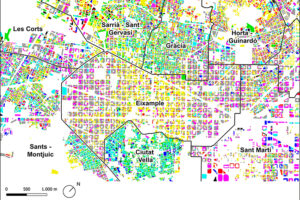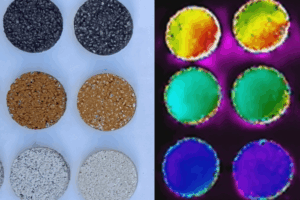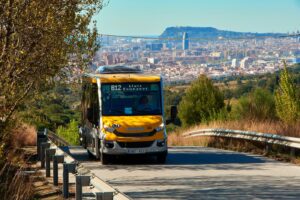TECHNOLOGICAL CAPABILITIES

OCEAN ENERGY
- Tidal power, wave power, offshore wind power, ocean thermal energy conversion, energy form currents and blue energy or salinity gradient energy.

MARITIME TRANSPORT
- Energy saving, reduction of contamination and improvement in management of energy quality and emissions.

PORT ACTIVITIES
- Studies of the traffic of boats in ports and air quality, using data from the automatic identification system (AIS) during manoeuvres.
- Production and maintenance of shipyards.

MARINE LIVING RESOURCES
- Prediction of hydro-morphodynamic and ecological evolution.
- Management of coastal bays.
- Monitoring of estuaries.
- Use of meteo-oceanographic conditions.
- Automatic learning. Modelling and display of marine agriculture data.
- Integrated multi-trophic aquaculture (MTA) techniques.
- Analysis and effect of meteorological and seasonal variables on the breeding system.
- Systematic studies of localization and monitoring of marine species to understand their behaviour.
- Measure of surface circulation forced by waves breaking. Monitoring habitat degradation.
INFRASTRUCTURE
- Addressing the negative impact of coastal construction on biodiversity.
- Reduction of the acoustic impact and vibrations from these constructions.
- Establishment of standards for terminology and methodology.
- Control of wind turbines and electricity substations and numerical modelling to take advantage of wave energy.

THE BLUE BIOECONOMY & BIOTECHNOLOGY
- Studies of natural pressures on the sea and those derived from humans.
- Development of a European system for ocean observation.
- Estimations of the amount of plastic floating on the surface of the ocean.
- Comprehensive modelling to trace the movement of plastic over the ocean.

SHIPBUILDING AND REPAIR
- Manufacture of vessels. Efficient, digitalized, automated and modular production of boats.
- Integration of the industrial internet of things (IIoT).

MARINE NON-LIVING RESOURCES
- Supply of critical raw materials.
- Improvement in underwater capture equipment (collectors).
- Seawater processing techniques and desalination.

COASTAL TOURISM
- Improvement in coverage in time and space, and in the resolution and quality of marine observations.
- Water management with innovative systems to manage reserves and the planning of trips.
RELATED PROJECTS
- The Architecture, Energy and Environment (AiEM) research group at the Universitat Politècnica de Catalunya - BarcelonaTech (UPC) has characterised Barcelona’s residential buildings according to their capacity to adapt to climate change. This study is part of the project ‘VeUvE: Urban havens for vulnerable zones’. The work highlights the climate inequality conditions present across different areas of the city and will help to better define the priorities and energy renovation strategies for its districts.
- The Construction Materials and Roads (MATCAR) research group at the Universitat Politècnica de Catalunya - BarcelonaTech (UPC) has carried out the RELUM project with the aim of researching and developing innovative solutions to help prevent global warming, through the design of sustainable pavements with reflective and photoluminescent properties, in collaboration with the company Sorigué.
- The Barcelona Innovative Transportation (BIT), the Research Center in Automotive and Advanced Mobility (CER-AMA) and The Future Mobility Research Hub (CARNET) research groups from the Universitat Politècnica de Catalunya - BarcelonaTech (UPC) are participating in the E-MED project, which aims to optimise energy and resource efficiency in public transport systems by addressing energy price fluctuations through smart and participatory solutions across the Mediterranean region.
- The company Trace ID and the group Twin Investors, in collaboration with the Textile Technology research group (TECTEX), which is part of the Institute of Textile Research and Industrial Cooperation of Terrassa (INTEXTER) at the Universitat Politècnica de Catalunya - BarcelonaTech (UPC), are developing electronic devices to identify, monitor, and study the traceability of the products in which they are embedded.





